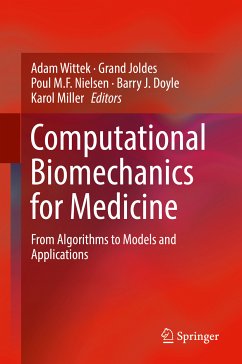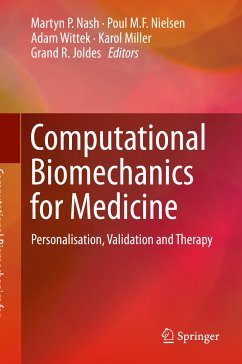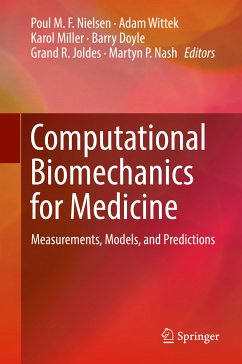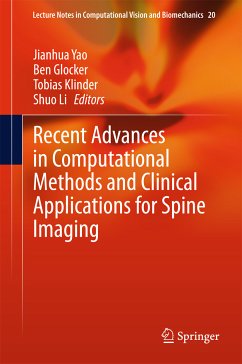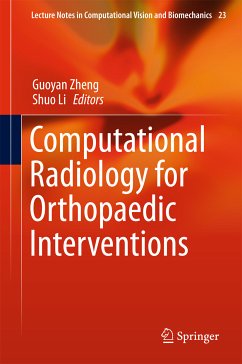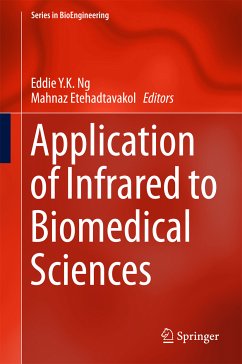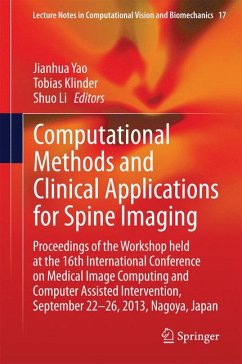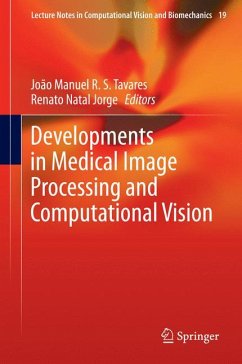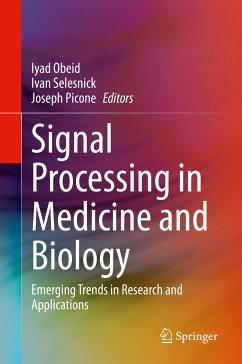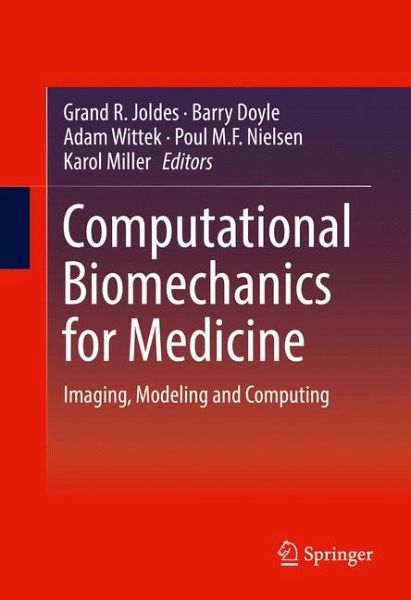
Computational Biomechanics for Medicine (eBook, PDF)
Imaging, Modeling and Computing
Redaktion: Joldes, Grand R.; Miller, Karol; Nielsen, Poul M. F.; Wittek, Adam; Doyle, Barry
Versandkostenfrei!
Sofort per Download lieferbar
112,95 €
inkl. MwSt.
Weitere Ausgaben:

PAYBACK Punkte
56 °P sammeln!
The Computational Biomechanics for Medicine titles provide an opportunity for specialists in computational biomechanics to present their latest methodologies and advancements. This volume comprises eighteen of the newest approaches and applications of computational biomechanics, from researchers in Australia, New Zealand, USA, UK, Switzerland, Scotland, France and Russia. Some of the interesting topics discussed are: tailored computational models; traumatic brain injury; soft-tissue mechanics; medical image analysis; and clinically-relevant simulations. One of the greatest challenges facing th...
The Computational Biomechanics for Medicine titles provide an opportunity for specialists in computational biomechanics to present their latest methodologies and advancements. This volume comprises eighteen of the newest approaches and applications of computational biomechanics, from researchers in Australia, New Zealand, USA, UK, Switzerland, Scotland, France and Russia. Some of the interesting topics discussed are: tailored computational models; traumatic brain injury; soft-tissue mechanics; medical image analysis; and clinically-relevant simulations.
One of the greatest challenges facing the computational engineering community is to extend the success of computational mechanics to fields outside traditional engineering, in particular to biology, the biomedical sciences, and medicine. We hope the research presented within this book series will contribute to overcoming this grand challenge.
Dieser Download kann aus rechtlichen Gründen nur mit Rechnungsadresse in A, B, BG, CY, CZ, D, DK, EW, E, FIN, F, GR, HR, H, IRL, I, LT, L, LR, M, NL, PL, P, R, S, SLO, SK ausgeliefert werden.



